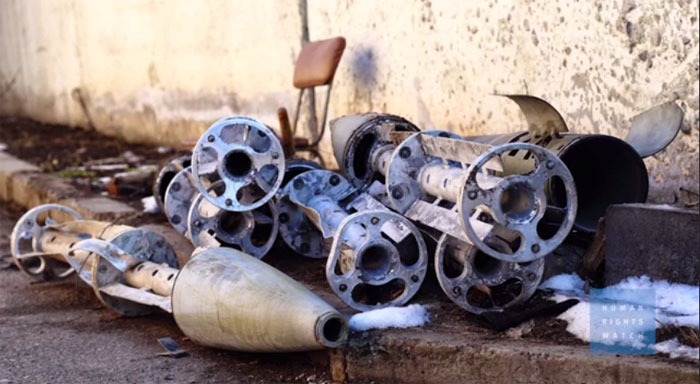Fewer people were killed by cluster bombs in 2017 than in the previous year.
This is one of the conclusions in this year’s Cluster Munitions Monitor, an annual report monitoring the treaty banning cluster munitions.The latest monitor, which covers 2017, was published today.
This year’s monitor recorded 289 casualties from cluster munitions in 2017. This does not represent all people killed by cluster bombs in 2017 because many deaths go unreported. Nonetheless, researches can show with certainty that the number of casualties decreased compared to 2016.
Syria
Over the past 5 years, 77% of recorded cluster munition casualties worldwide occurred in Syria. In 2017, the Monitor recorded 187 cluster munitions related casualties in Syria, compared to 860 in 2016.
“Cluster munitions pose extreme danger to civilians at the time of use, as the conflicts in Syria and Yemen illustrate, but cluster munition remnants also pose significant danger to civilians long after conflict has ended, as evidence from Lao PDR and other countries show,” says Jeff Abramson, coordinator of the Landmine and Cluster Munition Monitor. For this reason, he continues, there is acute need “in Syria and other countries where cluster munitions are used to quickly identify and clear contaminated areas.”
International ban effective
The decrease in the number of casualties last year is just one example of the impact of the Convention on Cluster Munitions, the ten-year-old treaty which prohibits all use and production of cluster munitions. “Through this global agreement countries are ridding the world of the cluster munition scourge,” says Hector Guerra, director of the Cluster Munition Coalition, of which PAX also is a member.
Fewer producers
The Convention has also led a growing number of states and financial institutions to prohibit or disinvest from companies that produce cluster munitions. PAX has helped achieve this through the annual report Worldwide Investment in Cluster Munitions. “Several companies that used to produce cluster munitions have stopped doing so as a result of the pressure that states and banks, insurers and pension funds exercise on them. We are proud to have contributed to that achievement,” says Michel Uiterwaal, who leads the cluster munition program at PAX.
While these trends are positive, more work needs to be done. The Cluster Munitions Monitor shows the vital need to prevent further casualties from cluster munitions. Cluster munitions continue to be produced and used by a small number of states that have not joined the Convention. Notably, Russia and Syrian government forces continue to use cluster munitions in Syria, as do Saudi Arabia-led forces in Yemen.
What is a cluster munition?
A cluster munition is a bomb containing many smaller bomblets, called submunitions. The bomb opens up in mid-air to release tens or hundreds of small bombs, which then cover an area up to the size of several football fields. Anybody within the strike area of the cluster munition, be they military or civilian, is likely to be killed or seriously injured. Moreover, many of the submunitions do not explode as intended, and they end up like landmines. They can remain a fatal threat to anyone in the area long after a conflict ends. As a result, most victims of cluster bombs are civilians — in 2016, 98% of recorded victims were civilians.
See Cluster Munition Monitor
and PAX’s work on stopping the flow of money to cluster munitions producers




